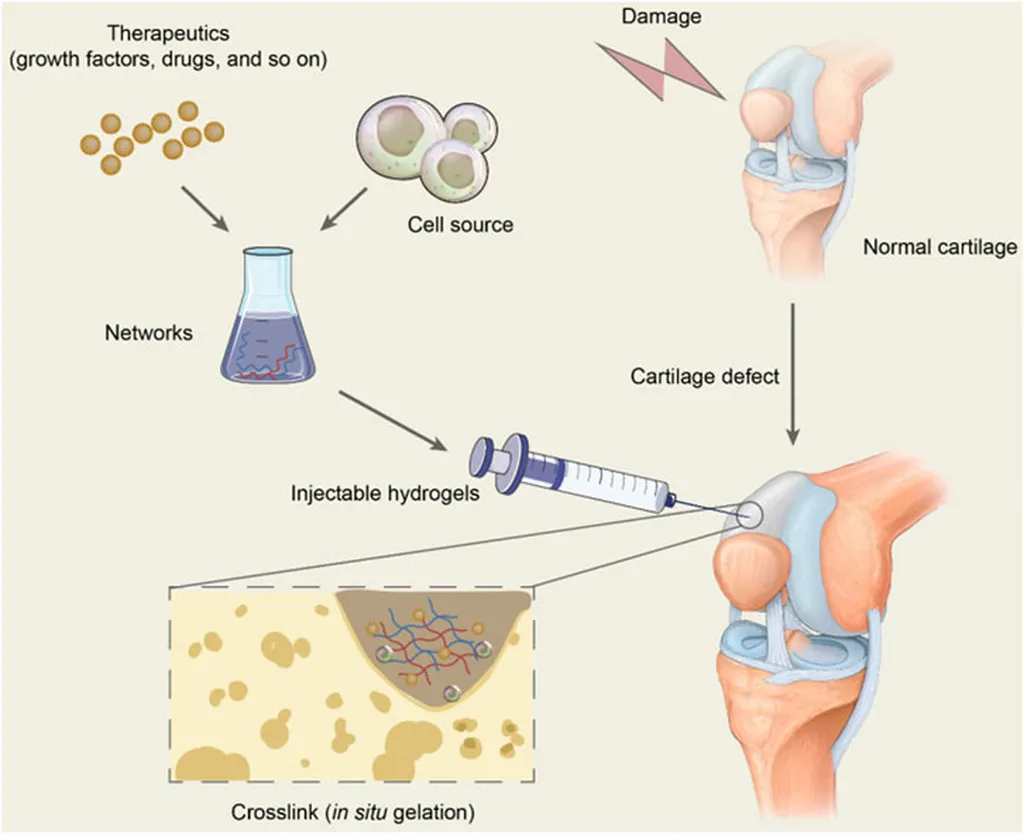In the quest to mend cartilage defects, a team of researchers led by Dr. Jing Mi from the Division of Sports Medicine and Adult Reconstructive Surgery at Drum Tower Hospital, affiliated with the Medical School of Nanjing University, has developed an innovative hydrogel that could revolutionize how we approach cartilage repair. This isn’t just about fixing a joint; it’s about reimagining how we heal and potentially transforming the landscape of regenerative medicine.
Cartilage defects are more than just a nuisance; they’re a gateway to severe degenerative joint conditions. The inflammatory response that accompanies these defects is a significant hurdle in effective repair. Enter diacerein, an anti-inflammatory drug already used in clinical settings, which has shown promise in mitigating this inflammatory response. But how do you deliver it effectively to the site of the defect? That’s where Dr. Mi’s team comes in.
They’ve created an injectable hydrogel that combines diacerein with polydopamine, a substance known for its adhesive properties, and other biocompatible materials. The result is a hydrogel that can be directly injected into cartilage defect sites, providing localized treatment and reducing the need for invasive surgery. “The direct injection of our hydrogel scaffold can enhance localized treatment, reduce surgical risks, and expedite recovery,” Dr. Mi explains. This isn’t just about creating a new treatment; it’s about making the treatment process more efficient and less traumatic for patients.
The hydrogel, created by crosslinking poly(ethylene glycol) diacrylate, four-arm polyethylene glycol-functionalized diacerein, hyaluronic acid, and polydopamine, has shown superior mechanical strength and biocompatibility in vitro. But the real test is in vivo, and that’s where the hydrogel truly shines. In a rat model, the hydrogel demonstrated its effectiveness in cartilage repair and anti-inflammatory activity. This isn’t just a lab success; it’s a step towards real-world application.
So, what does this mean for the future? For one, it opens up new avenues for tissue engineering and biological implantation strategies. But it also has implications beyond the medical field. In industries like energy, where wear and tear on machinery can lead to costly downtime, a material that can repair and regenerate itself could be a game-changer. Imagine a world where machinery can heal itself, reducing the need for maintenance and repair. It’s a bold vision, but it’s one that Dr. Mi’s research brings a step closer to reality.
The study, published in Macromolecular Materials and Engineering, translates to “Macromolecular Materials and Engineering” in English, is a testament to the power of interdisciplinary research. It’s not just about medicine; it’s about materials science, engineering, and the potential to transform industries. As we look to the future, it’s clear that the boundaries between fields are blurring, and it’s in these intersections that we’ll find the solutions to tomorrow’s challenges. Dr. Mi’s research is a shining example of this, a beacon of innovation in the field of regenerative medicine.

